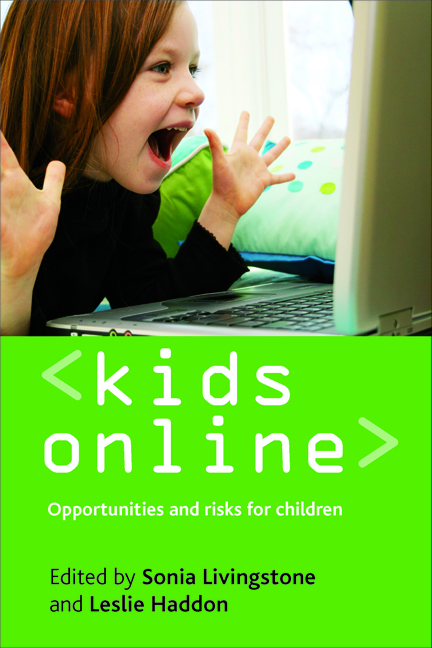Book contents
- Frontmatter
- Contents
- Notes on contributors
- Acknowledgements
- one Introduction
- Section I Researching European children online
- Section II Going online: new opportunities?
- Section III Going online: new risks?
- Section IV Policy implications
- Appendix A List of country codes
- Appendix B Children and parents online, by country
- Appendix C The EU Kids Online network
three - Research with children
Published online by Cambridge University Press: 15 July 2022
- Frontmatter
- Contents
- Notes on contributors
- Acknowledgements
- one Introduction
- Section I Researching European children online
- Section II Going online: new opportunities?
- Section III Going online: new risks?
- Section IV Policy implications
- Appendix A List of country codes
- Appendix B Children and parents online, by country
- Appendix C The EU Kids Online network
Summary
Introduction
This chapter untangles the ways in which young audiences, especially digital media and internet users, have been researched and how they can be approached. The first part is a brief discussion of the policy concept ‘children and young people’, since it has clear implications for how the research agenda is defined. The second part examines different theoretical approaches to the problem of whether children should be directly involved in research projects or not. In other words, should we be doing research with or on children? This distinction is important not only from a practical point of view but also from a theoretical (epistemological) point of view. The last part of this chapter addresses the issue of how one should research children's internet and digital media uses and experiences. More specifically, we consider whether methods conceived for working with children have to be entirely new or simply adapted from existing ones, and we discuss which methods are most appropriate for researching children's media/internet uses and experiences.
Constructing childhood and youth for digital media research
We begin this section with what might be seen as an obvious statement, but which is nonetheless of the utmost importance for our discussion: childhood and youth are social constructions; they are neither mere natural categories, nor universal ones. This assumption may be easily confirmed by the fact that both childhood and youth have changed over time and tend to assume a variety of configurations in different cultural and social contexts (Buckingham, 2000, 2007). From laws and public policies to relationships within families, from media representations to interpersonal communications, children and young people have been acknowledged and addressed in various ways (sometimes contradictorily) by different people and entities who contribute to define what they are or should be.
The media play an essential role in this process. One could say that childhood and youth are being defined to an ever-greater extent by the media. This is not just because media content reflects several aspects of children's and young people's lives, but also because children and young people are increasingly devoting their time to a vast array of media-related commodities that have been targeted at them by media industries for several decades now (Buckingham, 2007). Media-related commodities are ever more important in children's and young people's lives, not only as simple products but more essentially as resources with which particular cultures are built and identities defined.
- Type
- Chapter
- Information
- Kids OnlineOpportunities and Risks for Children, pp. 31 - 40Publisher: Bristol University PressPrint publication year: 2009

